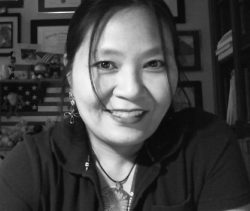GRAY LITERATURE
Gray literature refers to materials that are not typically published in peer-reviewed journals, books, or other traditional channels. This category of literature includes reports, press releases, government documents, white papers, brochures, pamphlets, billboards, and other types of non-traditional publications. These sources are often produced by organizations, businesses, government agencies, research institutions, or experts in a particular field.
- Formatting reference entries for gray literature can be confusing, since these sources don't typically fall into a particular citing pattern or have examples writers can follow.
- Use APA's "four elements of a reference" guide: Author: Who is responsible for this work? Date: When was this work published? Title: What is this work called? Source: Where can this work be found?
- Answering these four questions will help you create a reference for any type of source, particularly ones that are non-traditional.
- In-text citations: Narrative citation - Name (Date); Parenthetical citation - (Name, Date).
Press Release
U.S. Food and Drug Administration. (2019, February 14). FDA authorizes first interoperable insulin pump intended to allow
patients to customize treatment through their individual diabetes management devices [Press release].
https://www.fda.gov/NewsEvents/Newsroom/PressAnnouncements/ucm631412.htm
Billboard
Carvana. (n.d.). Sell us your car online [Billboard]. West Colonial Drive, Orlando, FL 32818.
For signs, billboards, and other similar objects, use physical location as the source.
For images of billboards found online, cite it as an image.
Pamphlet or Brochure - print and online
Center for Disease Control. (2019). Isolate and take precautions if you have or suspect you have COVID-19 [Pamphlet].
Primary Care Access Network. (2022). Healthcare for the uninsured and underinsured. [Brochure].
https://www.pcanorangecounty.com/docs/pcan-englishBrochure.pdf
When the publisher is the same as the author, which is often the case for group authors, omit the publisher from the source element.

